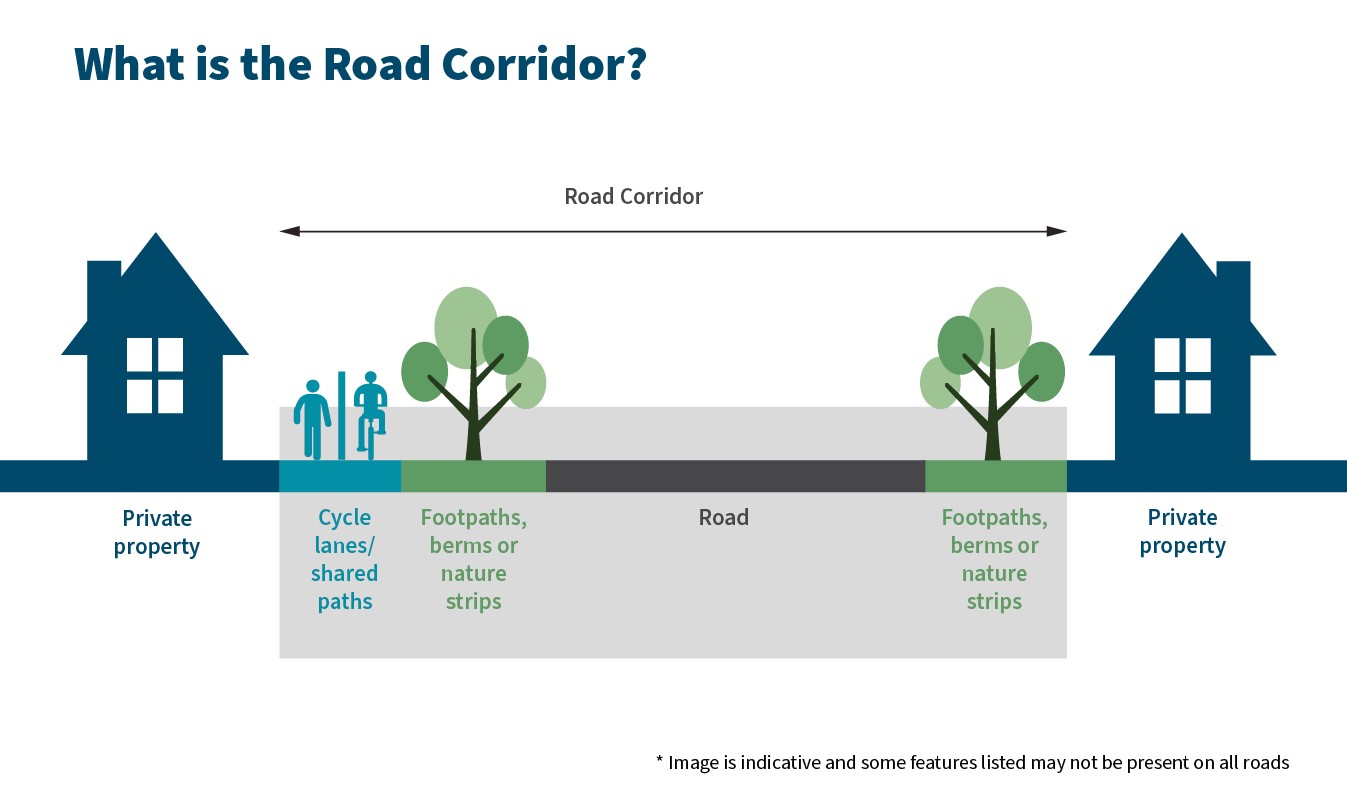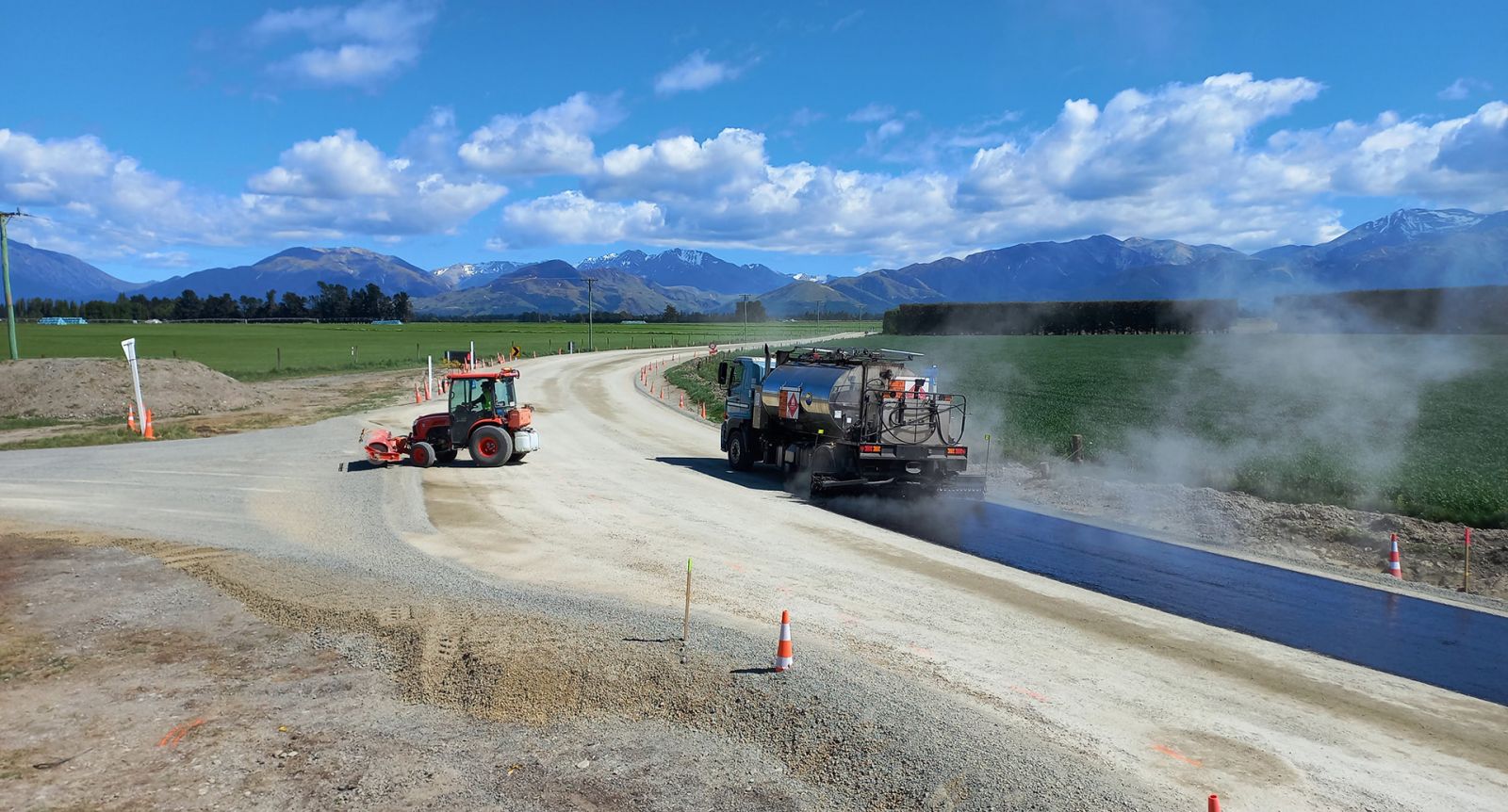Corridor Access Requests
What is a Corridor Access Request (CAR)?
A Corridor Access Request (CAR) is a formal notice of intention to carry out works in or in proximity to the Road Corridor that is submitted to the Road Controlling Authority (RCA) for approval.
The Ashburton District Council is Road Controlling Authority responsible for approving and coordinating works within the legal road corridor and ensures that these works comply with legislation, bylaws, codes, and industry good practice guidelines.
What is the Road Corridor?
The road corridor is the area between private property boundaries which includes footpaths, berms or nature strips, cycle lanes/shared paths and the carriageway.

Why do you need a CAR?
If you plan to undertake any work or activity that impacts the normal use of a road, footpath, or berm, you must submit a Corridor Access Request (CAR) before starting. This process ensures the work is completed safely and in compliance with all relevant regulations.
- To obtain a Work Access Permit (WAP), which formally approves access to the legal road corridor. The WAP outlines specific conditions that must be met.
- To coordinate your work with other stakeholders and minimise disruption to the road network.
- To verify that all necessary approvals and documentation such as design plans or Council consents are in place before work begins.
- To ensure existing assets and infrastructure are identified and protected, including pavement surfaces, underground services, roadside structures, landscaping, and trees.
- To ensure proper reinstatement and maintenance of road assets in accordance with required standards during the warranty or defects liability period.
A CAR is required if you plan to undertake any work or activity that impacts the normal use of a road, footpath, or berm.
This includes, but is not limited to:
- Excavation activities such as digging, trenching, drilling, or any other work related to the installation or maintenance of utility infrastructure.
- The installation of pipes, ducts, poles, cabinets, manholes, or any other structures within, on, or above the road corridor.
- Accessing and working within manholes, cabinets, and similar infrastructure.
- Non-excavation works such as water leak repairs, cable installation, overhead line maintenance, and similar activities.
- Road upgrades, resurfacing, and any other maintenance works on roadways.
- Tree and landscape maintenance along the road corridor.
- Construction of vehicle crossings.
- Temporary use of the public road for placing containers, skips, scaffolding, or occupying restricted parking spaces.
- Temporary site access for activities like site deliveries, private construction, concrete pouring, demolition, or other works that may encroach upon the road corridor.
- Installation of private utility connections, including water, wastewater, or stormwater drainage.
- Events that may impact road use or traffic flow.
- Surveying and inspection activities within the road corridor.
- Any other activity that may alter or disrupt the surface and normal operation of the road corridor.
Applying for a CAR
The CAR application process is done via Submitica.
- Create an account on Submitica.
- Check for conflicting sites on the Map.
- Select the appropriate Application type and submit your worksite application and upload any supporting documentation.
- Complete each field with accurate detail to progress your application. (Where, When, Who, What etc.)
- As part of the CAR application, customers may be required to submit a
Traffic Management Plan (TMP). - Your request will be confirmed via email, and you will be given a unique worksite number.
- Within the prescribed timeframe, the assigned corridor manager will process your application or inform you if more information is needed.
- You will receive an email that your worksite is approved, subject to reasonable, local, and/or special conditions.
Help with the online application process
Submitica Guidance Document v2025 – In development
